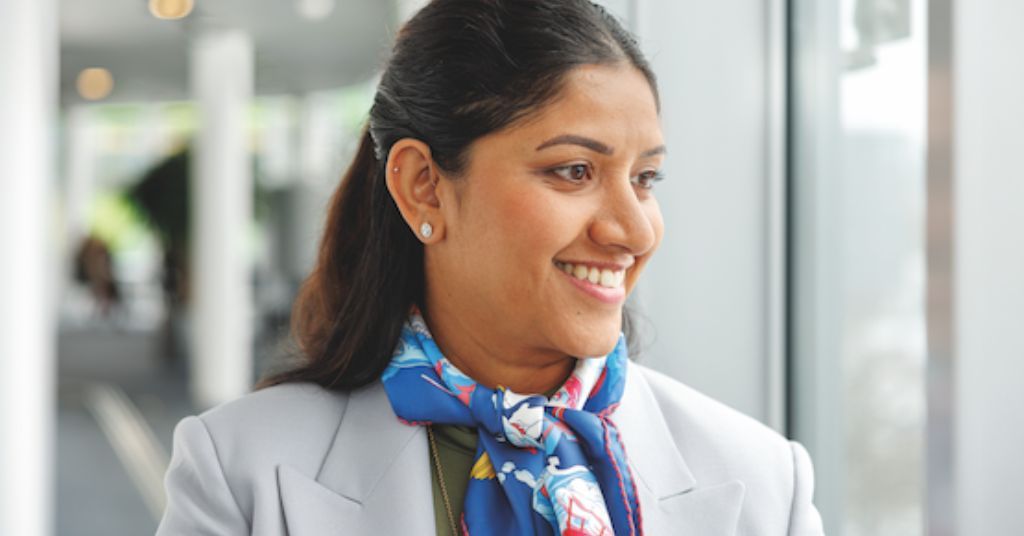
How to talk about your child’s hearing loss diagnosis
August 7, 2020
Community Spotlight: Meet Merry Kelly, a life coach for the hard of hearing
August 12, 2020How sign language helped me accept my hearing loss

At the start of my hearing journey, I didn’t know just how much learning a new language could help me grow my confidence.
Having always used speech, my family never saw the need to take up sign language once I lost my hearing. As a teen, I took the initiative myself. Wearing hearing aids and learning sign language increased my confidence, allowed me to be a part of a community, and helped me accept my unique deaf identity.
Hearing aids
The first time I was fitted with hearing aids, it was like something switched on in my brain. All of a sudden, words were more than just whistles, footsteps were more than just vibrations, music was a mixture of different tones, and my voice felt booming and clear. After my fitting, the world became wider. Using my technology, including my hearing aids and Roger remote microphone, I was able to understand more speech and sounds than I ever thought possible.
While my devices helped me navigate the world of sound, I wasn’t connected with my deaf identity. Even at a young age, I knew I was different, and I felt isolated from my peers in a mainstream setting. I thought my hearing loss represented a part of me that was broken, but that couldn’t be further from the truth. I was having a particularly difficult year in school when a mentor noticed me struggling, and during one of our conversations asked, “Have you ever considered the label of deaf?”
She told me all about her secondary job as a sign language interpreter, and invited me to join her in a meeting to help the Texas Association of the Deaf create new legislation benefiting the Deaf community. I was hesitant to accept, and in the days leading up to it, riddled with anxiety. As soon as I entered the meeting room, however, I was amazed by the incredibly diverse group of people gathered there. Nearly everyone in attendance was deaf or hard of hearing, and they were all unique. Some of them communicated with sign language, some with writing, and some with speech. There were even people using cochlear implants and hearing aids like me!
“Nearly everyone in attendance was deaf or hard of hearing, and they were all unique.”
For the first time, I wasn’t the odd one out. There was a whole community of people like me that I could be a part of, and I wished I had known about it sooner.
Learning sign language
I found a local tutor who was willing to help me learn. Since she is Deaf herself, communication during our first few lessons was challenging. I only communicated orally and she only communicated with sign language, but she never gave up on me. My eagerness to communicate with my teacher was what allowed me to be immersed in the Deaf world more than I ever have before. Though the learning process was tough at times, ASL did what a spoken language couldn’t: it felt natural and accessible.
Over the next few years of my learning process, I noticed how sign language broke down barriers and opened up doors for me, both in professional and social settings. Just like my hearing aids did years ago, the first time I worked with a sign language interpreter opened up a new world for me. I was able to participate in discussions, events, and lectures with full confidence.
Even on my more difficult hearing days I know I can count on my interpreter to relay information that I may have missed. And in other settings, I can make the most of my technology by continuing to advocate for my own hearing needs. While the connection wasn’t obvious at first, hearing technology and sign language truly go hand in hand.
“While the connection wasn’t obvious at first, hearing technology and sign language truly go hand in hand.”
Sign language also allowed me to transition from the physical condition of not hearing to being part of a culture and community. This community allowed me to accept myself, and use the labels of “deaf” or “hard of hearing” without shame. It is through sign language that I discovered the benefit of being around people who understand my needs and struggles.
It’s been a few years since the start of my learning journey, and the biggest takeaway has been that anyone— D/deaf, hard of hearing, or even hearing— can benefit from learning sign language. I encourage anyone who is interested in sign language or Deaf culture to start now. Sign up for a class, find ways to get involved with your local Deaf community, use an online sign language dictionary, or seek out signing creators online.
Read more: How to learn sign language
You may find that the benefits are greater than you expected!



